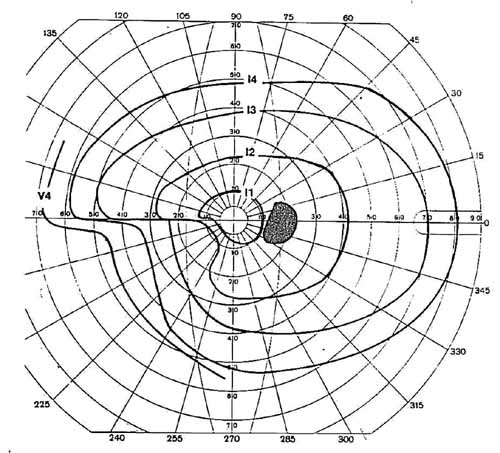Idiopathic Intracranial Hypertension
(Pseudotumor Cerebri)
Michael Wall, M.D.
The University of Iowa
Department of Neurology and
Department of Ophthalmology and Visual Sciences
What are the typical symptoms of IIH?
The symptoms most commonly reported by IIH patients followed by their frequency are:
- headache (94%)
- transient visual obscurations or blurring (68%)
- pulse synchronous tinnitus or "wooshing noise" in the ear (58%)
- pain behind the eye (44%)
- double vision (38%)
- visual loss (30%)
- pain with eye movement (22%)
Headache
Headache is present in nearly all patients with IIH and is the usual symptom for which patients seek medical attention. The headaches of the IIH patient are usually severe and daily; they are are often throbbing. They are different from previous headaches, may awaken the patient and usually last hours. Nausea is common and vomiting less so. The headache is often the worst head pain ever experienced. Although uncommon, the presence of pain behind the eyeball that is worsened movements of the eyes can occur.
Transient visual obscurations
Visual obscurations are episodes of transient blurred vision that usually last less than 30 seconds and are followed by full recovery of vision. Visual obscurations occur in about 3/4 of IIH patients. The attacks may be involve one or both eyes. They are not correlated with the degree of intracranial hypertension or with the extent of optic nerve swelling. Visual obscurations do not appear to be associated with poor visual outcome.
Pulsatile intracranial noises
Pulsatile intracranial noises or pulse-synchronous tinnitus is common in IIH. The sound is often unilateral. In patients with intracranial hypertension, compression of the jugular vein on the side of sound abolishes it. It is likely due to turbulence and narrowing of the transverse venous sinus (See Figure below), known to occur with increased intracranial pressure.
The arrow points to a narrow transverse venous sinus likely responsible for pulsatile tinnitus.
Visual loss
The most serious problem patients have is vision loss. (Figure 9, 10) About 5% of patients go blind in at least one eye. These are usually patients who do not return for follow-up evaluation or seek attention very late in their course.
A further scientific discussion can be found with this article: Wall M, George D. Idiopathic intracranial hypertension. A prospective study of 50 patients. Brain. 1991 Feb;114 ( Pt 1A):155-80. PubMed PMID: 1998880).


Continue with How is the diagnosis of IIH made?
Return to IIH Index


